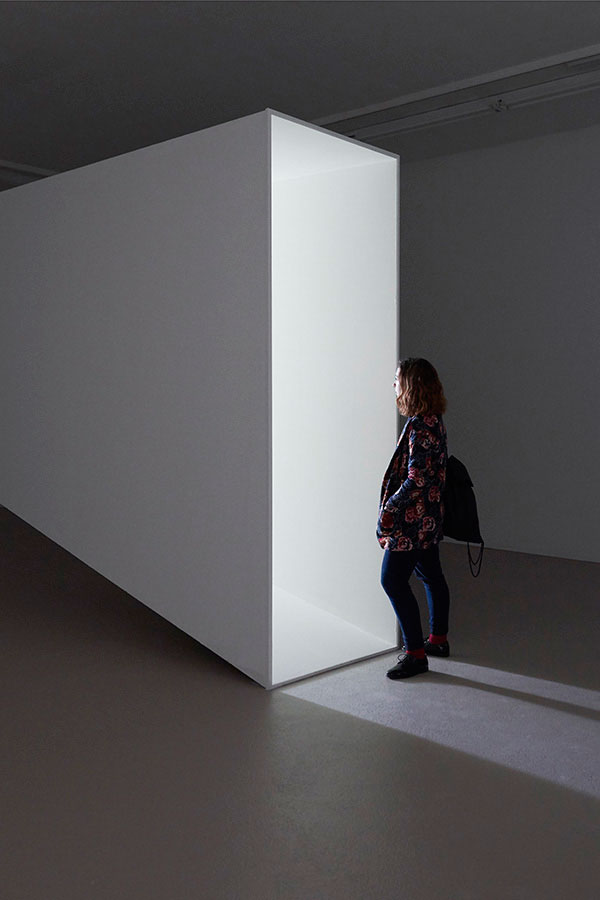Ne Voulais prendre ni forme, ni chair, ni matière
|
The environment proposed here by Daniel Steegmann Mangrané begins with and spreads out from his artwork Phasmides. Falling somewhere between a modernist and anthropologist framework, this film is centered on the Phasmid (taken from the Greek, meaning “ghost”), more commonly known as the stick insect. The artists unexpected encounter with this phasmid, in 2008, was decisive, as it allowed him to engage in long term research around the idea of moving beyond Western dualisms. Stretched out like a stick, unmoving like a plant, this mimetic species is a master of camouflage, blending in so well with its surroundings that it almost completely disappears. In his text “Mimétisme et psychasthénie légendaire“(Mimicry and legendary Psychasthenia) (Minotaure n° 7, 1935), Roger Caillois defines mimicry not as some kind of mechanism for hiding from predators but rather as the desire to dissolve into one’s environment. Phasmides, a hybrid form between diorama and living painting, shows the phasmid appearing and disappearing like some form of living paradox. The insect reveals all of the ambivalence of its being, an unsuspected affinity between animal, plant and geometrical form, in order to propose an image which is “so very strong and so very fragile”. Moving through environments which are in turn organic and geometric, it highlights the constantly evolving relationships that it entertains with its surroundings, cancelling out any opposition that might exist between the animate and the inanimate. Background and figure, subject and object, nature and culture no longer appear for what they are but rather for the relationships that they stimulate. By placing all of these relationships in space, the artist has provided us with a sharp and critical tool: “if there are no more subjects nor objects, then there are no longer spectators or works of art, but rather processes of relationships of mutual transformation. Combinations of agents which influence one another”. The path proposed by Daniel Steegmann Mangrané thus constitutes an initiatory environment for the visitor, one punctuated by the trajectory of the light. Inhabited by the phasmid, a creature “with neither head nor tail”, it enables one’s gaze to be shifted away from the center and allows one to play with, and test, one’s own position. The visitor is perpetually engaged in wandering along this path that has been designed for them, quite like the landscape that the artist has created for the stick insect.
Curated by Nathalie Ergino and Elli Humbert Photography: Teresa Estrada
|
|
| All works |







































 |
|
| Fog Dog 2020 |
|
 |
|
| A Leaf Shaped Animal.... 2019 |
|
 |
|
| A Transparent Leaf... 2017 |
|
 |
|
| A Transparent Leaf... 2017 |
|
 |
|
| Cosmic Spring / Jardin Infini 2017 |
|
 |
|
| Phantom 2017 |
|
 |
|
| Animal que no existeix 2014 |
|
 |
|
 |
|
| Phasmides 2017 |
|
 |
|
| Lichtzwang 1998 - Ongoing |
|